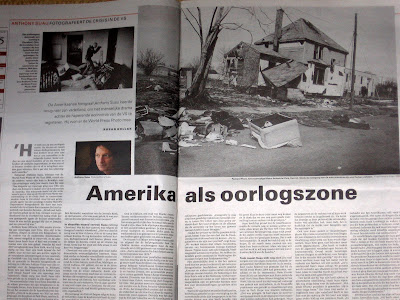

The Big Flood of 1953 photographed

Of the numerous floods that have swept the Netherlands, this was the first one to be documented photographically on a large scale. Journalists, photographers and filmmakers travelled to the disaster area in large numbers. For this website all photographs made in February 1953 of the flood disaster by Dolf Kruger, Ed van der Elsken, Aart Klein, Kees Molkenboer, Cas Oorthuys and Ed van Wijk have been scanned.
The Nederlands fotomuseum (Netherlands Museum for Photography) aims at making Dutch photography and its history easily accessible and at furthering people’s interest in this cultural heritage.
















































